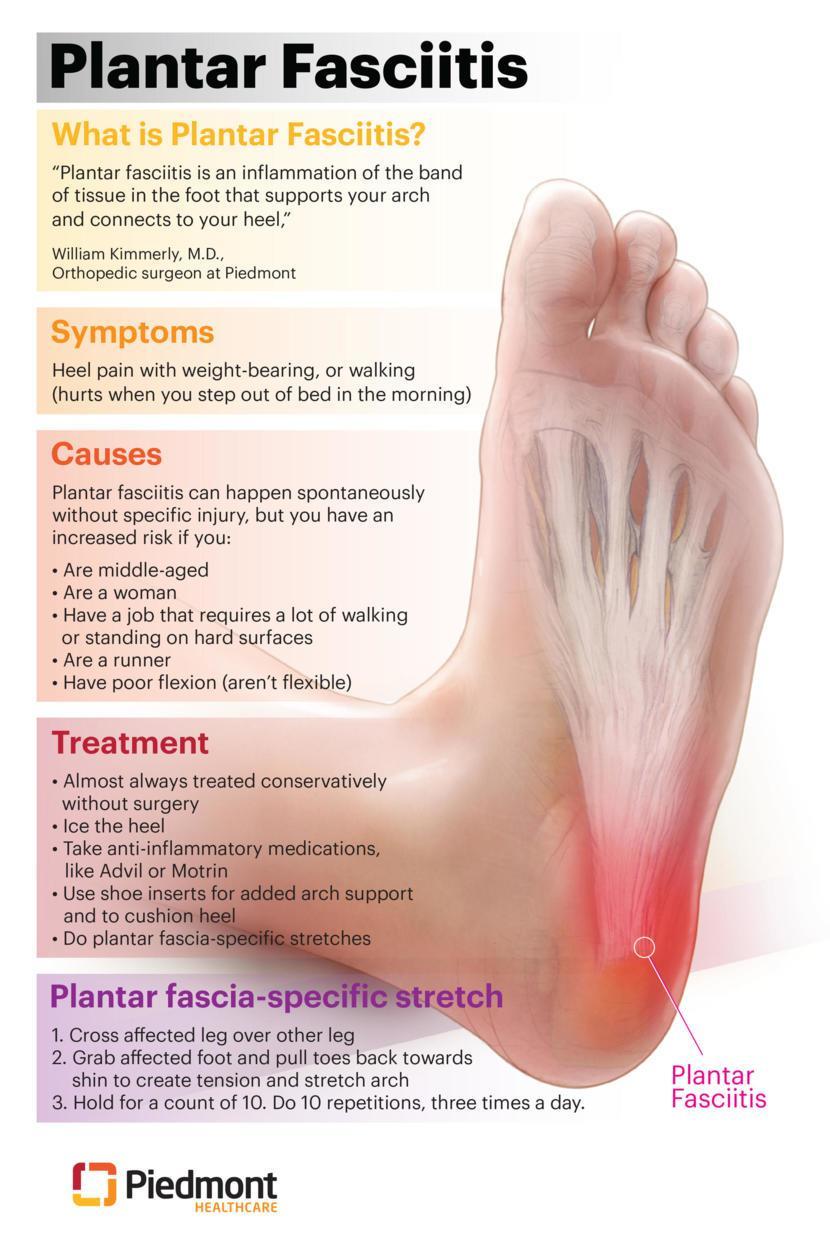Plantar Fasciitis/Heel Spur Syndrome

Dr. Kelvin Barry is a podiatrist with 17 years of private practice experience. He is now practicing in South Jersey. Dr. Barry is a doctor specializing in the treatment of the foot , ankle and related parts of the leg. As a podiatrist, Dr. Barry diagnoses and treats conditions of the feet. The feet are key body parts... more
Plantar fasciitis is a condition that causes pain along the bottom of the foot and particularly the heel. It's easy to identify because most sufferers describe it as sharp, intense heel pain upon stepping out of bed in the morning. The first steps are usually the worst, and the pain eases up as the day goes on. The heel pain also spikes at the start of the activity and goes away with use. It may also spike after a long rest when restarting activity.
Plantar fasciitis is common in runners, performing repetitive plantar flexion and dorsiflexion of the foot. It is also common with sudden weight gain and sudden increases in activity. The plantar fascia is a long, thick and tough band of tissue that provides support for the medial longitudinal arch of the foot. The plantar fascia is stretched and the arch flattens slightly to absorb the impact each time the heel impacts the ground. This fascia is not very flexible and such repetitive stretching from impact can result in small tears in the fascia.
Symptoms
Heel pain during the first steps of the morning is a classic sign of plantar fasciitis. This pain is the result of the foot resting in plantar flexion overnight, which allows the fascia to shorten. When the shortened fascia is stretched as you get up out of bed, the pain increases.
If you have plantar fasciitis you will likely have an increase in pain along the bottom of your foot (the plantar fascia) when you extend your toes. If this motion doesn't increase your symptoms, you may not have true plantar fasciitis.
Other common signs of plantar fasciitis include increased pain at the start of exercise and when resuming activity after rest, and a history of recent weight gain, or a sudden change in exercise intensity, duration, or type.
Plantar fasciitis or heel pain syndrome
Although plantar fasciitis is frequently diagnosed, there are many other conditions that have similar symptoms and heel pain syndrome is often a more appropriate diagnosis. Heel pain syndrome is a chronic condition that comes on slowly over time and is generally caused by faulty foot and ankle biomechanics rather than overuse.
Plantar Fasciitis and Heel Spurs
About half of the patients with plantar fasciitis have a heel spur. When the plantar fascia becomes chronically inflamed, a heel spur can grow at the attachment point between the fascia and the calcaneus (heel bone). If heel pain is treated early, heel spurs can often be prevented.
Causes and risk factors
Typical causes of plantar fasciitis include overstretching a tight plantar fascial band, consistent overuse, and irritation that results in microtears to the fascia at its calcaneal (heel bone) attachment.
Predisposing factors may include:
- Flat feet
- High arches
- Excessive pronation
- Obesity or sudden weight gain
- Tight Achilles tendons
- A sudden increase in activity intensity, time or type
- Wearing high heels that shorten the calf muscles, Achilles tendon, and plantar fascia
- A sudden change in running or walking surface
- Prolonged standing or weight bearing
Management and treatment
The most commonly recommended conservative treatment includes the following:
- Rest and Ice: It's important for those with plantar fasciitis to avoid irritating activities, and allow the fascia to rest until pain subsides. Icing the area after use can also help reduce pain and swelling.
- Nonsteroidal anti-inflammatories may be recommended by your doctor for 2-4 weeks to reduce pain and inflammation.
- Massage Roller: Massaging the fascia by rolling the foot over a 3-4 inch diameter tube, such as a rolling pin or soup, can be an effective treatment.
- Wearing a Night Splint: A night splint keeps the foot flexed and the plantar fascia lengthened overnight. For some people, this improves recovery times.
- Other Treatments: Your doctor may also recommend weight loss when appropriate, taping the heel and arch to also help reduce pain, or the use of medial longitudinal arch supports, to help reduce pain while the plantar fascia heals.
Plantar fasciitis stretching
- Plantar stretch
- Achilles tendon heel stretch
- Calf stretch
A new stretch reduces plantar fasciitis pain
A new stretching technique has proven effective at reducing the pain of plantar fasciitis when performed several times a day. It is performed by crossing one leg over the other and pulling the toes toward the shin for a count of ten and repeating ten times. This is a change from the standard treatment that recommends the weight-bearing stretches.
Plantar fasciitis strengthening exercises
The traditional strengthening exercises for plantar fasciitis include scrunching up a hand towel with the toes or pulling a towel weighted with a soup can across the floor. New research has found that eccentric exercises seem to improve the recovery times of both tendon and plantar fascia injuries.
After exercise, applying a cold pack to the heel at the point of maximal tenderness for 15-20 minutes is helpful to relieve pain.
Any foot injury that does not respond to treatment in 1-2 weeks may be more serious. Always consult a physician for a thorough evaluation and diagnosis.
Source: https://www.verywellhealth.com/plantar-fasciitis-heel-pain-3120325









